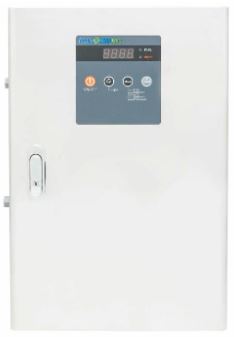Of late, hypochlorous acid (HOCL), also called electrolyzed water, has been in the headlines as a mild, yet powerful and highly effective sanitizer. A broad segment of industries uses commercially produced hypochlorous acid products, from hospitality and healthcare, to food processing and lifestyle establishments (professional massage clinics, gyms, fitness centers and sports clubs). Yet, one can’t help wonder if making your own disinfectant, using a DIY approach, makes sense? The answer may surprise you!
Putting it Together: It can be harder than you’d imagine!
It’s always tempting, not just as a DIY challenge, but also as a money-saver, to make your own sanitizers and disinfectants. You’ve probably heard of any number of recipes, either from friends, family members or business associates. The use of ingredients, such as:
– Water
– White vinegar
– Rubbing alcohol
– Vodka (or other alcohol substitutes)
– Lemon juice, and
– Essential oils
…probably feature in your home-made recipes. And then comes the “fuzzy” part. If you wish to produce these products on a large scale – for instance, to use in your food processing plant – how large a “bucket” do you need to produce all you want? What’s the concentration of Vodka and White vinegar? And, how do you deal with contaminants as you mix and transfer your ingredients from one container to another?
Though your list of ingredients might be simple, putting it all together can be harder than you think!
Choosing Simplicity and Effectiveness
That’s the reason that most residential, commercial, and industrial users prefer hypochlorous acid (HOCL) as their sanitization agent of choice. If you’re interested in how to make hypochlorous acid, however, you’ll likely begin your search by doing some basic online research. At it’s very basic, self-made HOCL has a very simple list of ingredients, which includes:
– Household salt
– Tap water, and
– Household-grid supplied electricity
It’s really that simple! And, with the right equipment in place, making your own hypochlorous acid products is not just simple and cost-effective, it’s also highly efficient and efficacious at dealing with germs and viruses.
Of course, you might try building your own HOCL-makers. But when you mix and cook your concoction using rudimentary home-made devices, there’s always the risk of producing disinfectant with lower concentration of active HOCl molecules. And that defeats the purpose of producing disinfectants in the first place!
Follow the KIS (Keep it simple!) Principle
If you are really interested in learning how to make hypochlorous acid in-house, whether that’s in your home, office, or place of business, then all you need is a high-quality HOCL maker. These devices are relatively low-priced, and depending on which model you buy, you could produce 1 liter of HOCL (@ 200 ppm) in 8 minutes, or as much as 20 liters (at 50 ppm) per minute.

Depending on the types of additives you choose to use – normal salt water or acidified salt water – larger HOCL machines can churn out highly effective hypochlorous acid products at even higher rates – 24 liters a minute (@50 ppm). Today’s HOCL technology allows you to keep it simple, and produce unlimited amounts of HOCL in-house, to meet all your sanitization and disinfectant needs.

